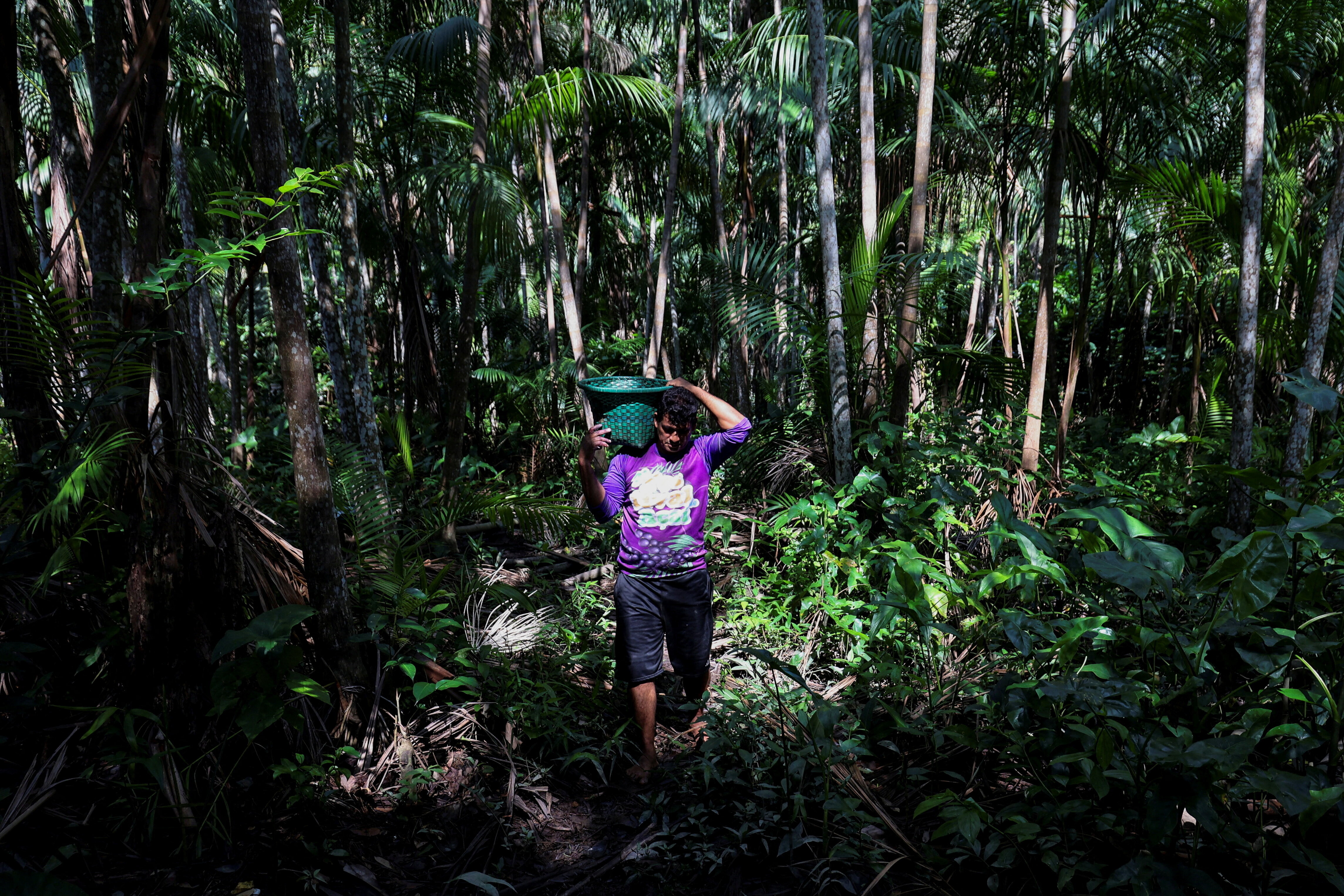How are cities adapting to the increasing risk of floods?
Climate change is increasing the frequency and intensity of disasters such as flooding.
Image: Unsplash/Egor Gordeev
Somik V. Lall
Lead Economist, Office of the Chief Economist for Equitable Growth, Finance and Institutions, World BankStay up to date:
Climate Indicators
- Low-income countries tend to suffer more deaths every time a flood hits and recover more slowly from the resulting economic damage, a new study finds.
- This is because they usually have fewer resources and infrastructure to handle these disasters, such as levees and dams.
- High costs associated with migration in low-income countries also discourage people from moving to safer places, the study says.
The major floods in India and Australia in 2022 have once again drawn attention to the destructive capacity of disasters. Climate change is likely to increase the frequency and intensity of these shocks. At the same time, the ability to cope with disasters will vary widely across places and over time. The living conditions of households in India are very different from those in Australia. In India, a large proportion of urban households live in slums on hillslopes or other unsafe areas. The impact of similar disasters would be different for the two countries. Given that a majority of people around the world now live in cities, it is important to measure the vulnerability and adaptive capacity of such productive areas to disasters.
Cities in developing countries suffer more
Research on the impact of extreme weather predicts that the developing world, especially the poor and vulnerable populations, will be disproportionately affected (Mendelsohn et al. 2000, Mendelsohn et al. 2006, Tol 2009).
In our new paper (Gandhi et al. 2022), we use data on floods for 9,468 cities in 175 countries to examine the differential impact of floods on cities in high- and low-income countries. We combine monthly night light (VIIRS) data for these cities from 2012 to 2018 with a global dataset of geocoded disasters. Figure 1 shows that after a flood event, night lights fall and then recover. Floods disrupt life in cities through temporary power failures, disruption of essential services, damage to property, and temporary closure of offices and factories. These are reflected in the lights seen at night (Kocornik-Mina et al. 2016).
Figure 1 Night lights before and after floods in Chennai, India: 2015–16
Note: Chennai suffered from major floods between November and December 2015.
We test whether cities that face repeated flooding in 1970–2010 (referred to as risky cities) had a lower death toll due to floods. We posit that cities that faced repeated flooding adapt and become more resilient to the destruction caused by the flood events.
We find evidence of such adaptation for risky cities in high-income countries; these cities saw fewer deaths per disaster in 2010–2018. In contrast, cities in low-income countries that had experienced repeated flooding in the past saw higher deaths per disaster. Hence, cities in developed countries have been more successful in mitigating the human destruction caused by floods.
Figure 2 The death toll in cities in high-income and low-income countries
Notes: The black circles depict the coefficient estimates, which show the relationship between the number of extreme rainfall events (1970–2010) in cities on deaths per disaster (2010–2018) for cities in low-income, high-income, and all countries. Coefficients to the right of 0 on the x-axis indicate a positive relationship and coefficients to the left of 0 indicate a negative relationship. The dashed lines show the 95% confidence interval. The full results and description are available in Table 3 in Gandhi et al. (2022).
We also document that cities in developing countries suffer greater short-term economic damage due to floods relative to cities in developed countries. We find that, on average, floods lead to a decline in mean night lights in cities by around 3%. Finally, we find that recovery is faster in high-income countries relative to low-income countries; cities in high-income countries see economic activity reach pre-flood levels in one month, while it takes two months for full recovery in cities in low-income countries.
Figure 3 Impact of floods on night lights in cities in high-income and low-income countries
Notes: The black circles depict the coefficient estimates, which show the relationship between floods and night lights for cities in low-income, high-income, and all countries. Coefficients to the right of 0 on the x-axis indicate a positive relationship and coefficients to the left of 0 indicate a negative relationship. The dashed lines show the 95% confidence interval. The full results and description are available in Table 5 in Gandhi et al.(2022).
Adaptation to flood shocks
Adaptation investments can reflect choices by individuals, such as to migrate to a safer place, or by governments, such as to invest in land-use planning and protective infrastructure. An emerging literature explores the causes and consequences of such strategies. Migration out of risky places is a key strategy (Desmet et al. 2018), as has been found in the case of tornados-affected areas (Boustan et al. 2012) and hurricanes (Strobl 2011) in the US.
However, recent research suggests that post-disaster government relief (Henket at al. 2022) or high costs associated with migration in low-income countries (Cattaneo and Peri 2016, Peri and Sasahara 2019) discourage people from moving to safer places. Using a dataset of major floods mostly in developing countries, Kocornik-Mina et al. (2016) find that economic activity does not relocate to safer areas. Our study also finds no evidence of a decline in population growth for cities in low-income countries that faced repeated flooding in the past.
Richer places that have the resources and infrastructure to cope with disasters tend to be more resilient. Using city GDP, we find that within the same country, high-income and middle-income cities suffer less short-term economic damage in the aftermath of floods relative to low-income cities. This city-level evidence from the period between 2012 and 2018 supports the claim that economic productivity plays a causal role in mitigating the damage from Mother Nature’s increasingly strong punches.
Other factors – such as investments in flood-protection measures like levees and dams or the quality of a nation’s political institutions – are likely to play a role in attenuating the impact of floods. For 3,820 cities in China, India, Mexico, and the US, we use a geocoded dataset of large dams and identify which cities are within 100 kilometres downstream from a dam and are thus protected by at least one dam. We find that cities protected by dams see lesser disruption of economic activity, as measured by night lights during floods, relative to cities that do not have such protection.
How is the World Economic Forum fighting the climate crisis?
Conclusion
Flooding is an important type of disaster that creates fundamental measurement challenges in determining the geography of areas that actually flood. We invested the time and effort to create a standardised global city panel data set that includes all of the major flood events for 9,468 cities across 175 countries.
Using an event-study framework, we document how the death toll from flooding and economic activity (as measured by lights at night) are affected by such shocks. Our new empirical work supports the claim that economic development plays a central role in fuelling climate resilience. Housing quality and the housing consumption of poor people versus richer people offer one channel for explaining the role of income in insulating one from risk (Brueckner 2013).
We also chart a direction for further research to understand the interplay between private strategies of self-protection, market insurance, government action in the form of investment in local public goods, and public insurance that ultimately determines a population’s exposure to climate-change-related disasters.
References
Boustan, L P, M E Kahn and P W Rhode (2012), “Moving to higher ground: Migration response to natural disasters in the early twentieth century”, American Economic Review 102: 238–44.
Brueckner, J K (2013), “Slums in developing countries: New evidence for Indonesia”, Journal of Housing Economics 22(4): 278–90.
Cattaneo, C, and G Peri (2016), “The migration response to increasing temperatures”, Journal of Development Economics 122: 127–46.
Desmet, K, D K Nagy and E Rossi-Hansberg (2018), “Adapt or be flooded”, VoxEU.org, 2 October.
Gandhi, S, M Kahn, R Kocchar, S Lall and V Tandel (2022), “Adapting to flood risk: Evidence from a panel of global cities”, NBER Working Paper 30137.
Kocornik-Mina, A, T McDermott, G Michaels and F Rauch (2016), “Do floods shift economic activity to safer areas?”, VoxEU.org, 21 January.
Mendelsohn, R, A Dinar and L Williams (2006), “The distributional impact of climate change on rich and poor countries”, Environment and Development Economics 11: 159–78.
Mendelsohn, R, W Morrison, M E Schlesinger and N G Andronova (2000), “Country-specific market impacts of climate change”, Climatic Change 45: 553–69.
Peri, G, and A Sasahara (2019), “The impact of global warming on rural-urban migrations: Evidence from global big data”, NBER Working Paper 25728.
Strobl, E (2011), “The economic growth impact of hurricanes: Evidence from US coastal counties”, Review of Economics and Statistics 93: 575–89.
Tol, R S (2009), “The economic effects of climate change”, Journal of Economic Perspectives 23: 29–51.
Accept our marketing cookies to access this content.
These cookies are currently disabled in your browser.
Don't miss any update on this topic
Create a free account and access your personalized content collection with our latest publications and analyses.
License and Republishing
World Economic Forum articles may be republished in accordance with the Creative Commons Attribution-NonCommercial-NoDerivatives 4.0 International Public License, and in accordance with our Terms of Use.
The views expressed in this article are those of the author alone and not the World Economic Forum.
Related topics:
Forum Stories newsletter
Bringing you weekly curated insights and analysis on the global issues that matter.
More on Climate Action and Waste Reduction See all
Marco Lambertini and Marcelo Bicalho Behar
November 6, 2025
Lasse Bruun
November 6, 2025
Tom Crowfoot
November 5, 2025






